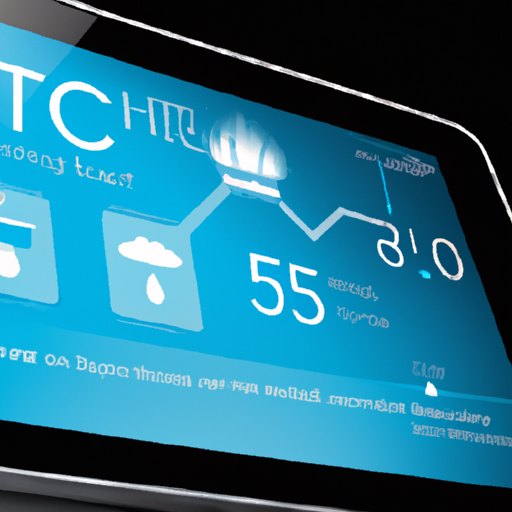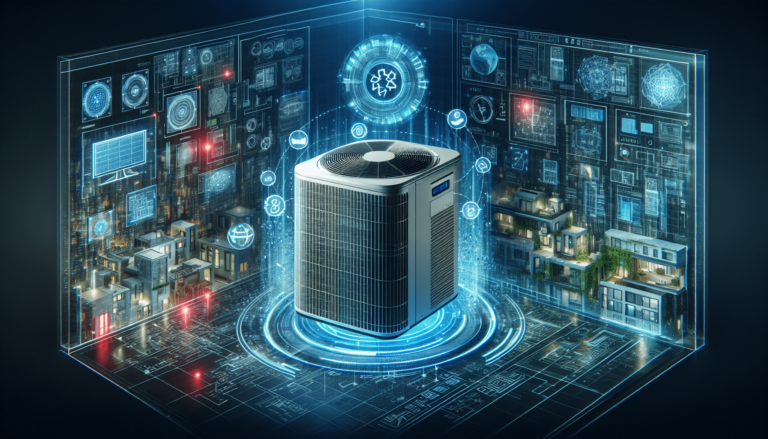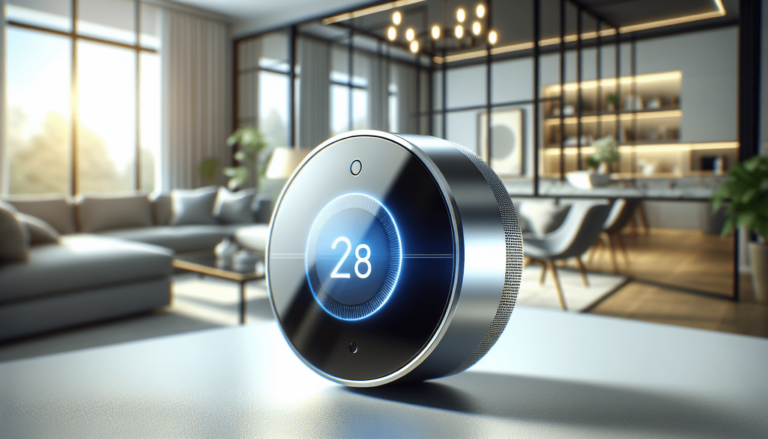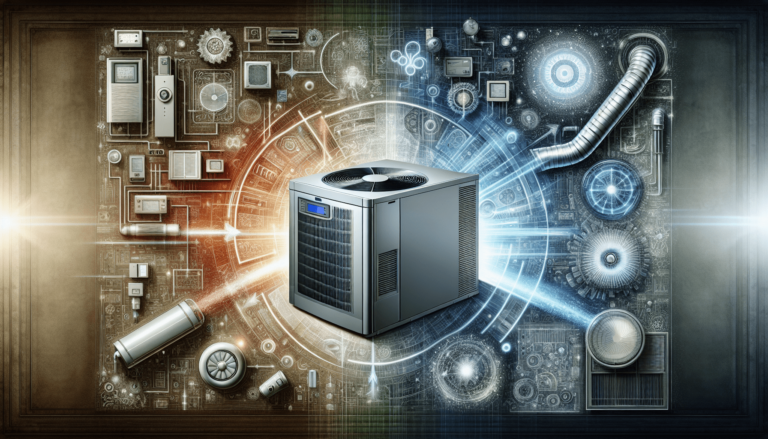

HVAC Services
Get Professional Repairs From The Area's Trusted HVAC Technicians. Ask About Our Services! We Offer Professional Heating & Cooling System Repairs And Guarantee Long-Lasting Results.
Got Question? Call us: (850) 678-2665Financing
Smart HVAC Systems: The Future Of Indoor Climate Control
Discover the future of indoor climate control with Smart HVAC systems. Control temperature, humidity, and air quality at the touch of a button. Learn more here.

Imagine having complete control over the temperature, humidity, and air quality of your living space, all at the touch of a button. Smart HVAC systems are revolutionizing indoor climate control, offering unparalleled convenience and comfort. These cutting-edge systems utilize advanced technology to optimize energy usage, monitor air quality, and provide personalized temperature settings tailored to your preferences. Gone are the days of constantly adjusting thermostats and enduring uncomfortable indoor environments. With Smart HVAC systems, you can enjoy the perfect climate in your home or office, making every moment a breath of fresh air.
Introduction
Welcome to the future of indoor climate control! Smart HVAC systems are revolutionizing the way we heat, cool, and manage the air quality in our homes and buildings. With the integration of artificial intelligence (AI) and the Internet of Things (IoT), these systems are taking energy efficiency, comfort, and convenience to a whole new level. In this article, we will explore the definition, benefits, components, and features of smart HVAC systems, as well as how AI and machine learning, IoT integration, remote monitoring and control, and energy efficiency optimization enhance their performance. We will also discuss the challenges and limitations that come with these systems. So get ready to discover the amazing possibilities that await you with smart HVAC systems!
Definition of Smart HVAC Systems
Smart HVAC systems refer to heating, ventilation, and air conditioning systems that are equipped with advanced technologies to optimize energy efficiency and enhance indoor comfort. These systems integrate AI and IoT to provide remote monitoring and control capabilities, allowing users to manage their HVAC systems from anywhere using connected devices such as smartphones, tablets, or computers.
Integration of AI and IoT
One of the key features of smart HVAC systems is the integration of AI and IoT technologies. AI algorithms analyze real-time data from various sensors and devices to make intelligent decisions regarding temperature, humidity, air quality, and energy usage. The IoT aspect allows these systems to be connected to the internet, enabling remote control and monitoring functionalities.
Remote Monitoring and Control
With smart HVAC systems, you no longer have to be physically present to manage your indoor climate. These systems offer the convenience of remote monitoring and control, allowing you to adjust settings, monitor energy usage, and receive notifications or alerts from anywhere, at any time.
Energy Efficiency Optimization
Smart HVAC systems are designed to optimize energy efficiency by continuously analyzing and adjusting various parameters based on real-time data. By utilizing AI and machine learning algorithms, these systems can learn user preferences, adapt to changing conditions, and make energy-saving decisions automatically. This leads to reduced energy consumption, lower utility bills, and a greener footprint.
Benefits of Smart HVAC Systems
The benefits of smart HVAC systems go beyond just energy efficiency. Let’s take a closer look at some of the advantages that make these systems a game-changer in indoor climate control:
Enhanced Energy Efficiency
By utilizing AI and IoT technologies, smart HVAC systems can achieve unparalleled energy efficiency. These systems continuously monitor and adjust various parameters, such as temperature, occupancy, and weather conditions, to optimize energy usage. The result is not only lower energy bills but also a reduced environmental impact.
Improved Comfort and Convenience
With smart HVAC systems, you can say goodbye to the days of manually adjusting thermostats and struggling with temperature imbalances. These systems use AI algorithms to create personalized comfort profiles based on user preferences. They automatically adjust temperature, humidity, and airflow to ensure optimal comfort in different zones or rooms. This level of personalized control leads to a significantly improved overall experience.
Remote Access and Control
Imagine being able to control your HVAC system while you’re away from home or even in another country. Smart HVAC systems provide remote access and control via smartphone applications or web interfaces. Whether you want to adjust the temperature before returning home, monitor energy usage, or receive alerts about system malfunctions, you can do it all with a few taps on your mobile device.
Cost Savings
Thanks to their energy efficiency optimization features, smart HVAC systems can result in cost savings. By reducing energy consumption, these systems help lower utility bills, which can add up to significant savings over time. Additionally, their predictive maintenance capabilities help identify and address issues before they become major problems, saving you from expensive repairs or replacements.
Components of Smart HVAC Systems
Smart HVAC systems consist of various components that work together to provide efficient and intelligent indoor climate control. Let’s explore some of the key components:
Smart Thermostats
Smart thermostats are the brains behind smart HVAC systems. These advanced devices utilize AI algorithms to learn user preferences, adjust settings automatically, and optimize energy usage. They can be programmed or controlled remotely using connected devices, allowing for maximum comfort and convenience.
Zone Controls
Zone controls enable personalized climate control in different areas or zones of a building. By dividing the space into separate zones, each with its own thermostat and dampers, smart HVAC systems can adapt to the specific needs and occupancy patterns of each zone. This not only improves comfort but also reduces energy waste by avoiding unnecessary heating or cooling in unoccupied areas.
Air Quality Sensors
Air quality sensors are essential components of smart HVAC systems. They monitor and analyze the air quality in real-time, measuring parameters such as particulate matter, VOCs (volatile organic compounds), CO2 levels, and humidity. By continuously monitoring air quality, these sensors enable the HVAC system to adjust ventilation rates and maintain a healthy indoor environment.
Connected HVAC Units
Connected HVAC units are equipped with sensors and connectivity features that enable them to communicate with other components in the smart HVAC system. These units can provide real-time data about temperature, humidity, and energy usage, allowing the system to make smart decisions for optimal performance and efficiency.
AI and Machine Learning in Smart HVAC Systems
AI and machine learning play a major role in the intelligence of smart HVAC systems. Here are some ways in which these technologies are incorporated:
Intelligent Climate Control
AI algorithms analyze a wide range of data, including user preferences, weather forecasts, and historical patterns, to make intelligent decisions about climate control. By learning from user behavior and adjusting settings accordingly, smart HVAC systems can maintain optimal comfort while minimizing energy consumption.
Predictive Maintenance
Smart HVAC systems use AI algorithms to analyze data from sensors, equipment diagnostics, and historical patterns to predict and detect potential issues before they become major problems. By addressing maintenance needs proactively, these systems can reduce downtime, increase the lifespan of HVAC equipment, and save users from costly repairs.
Dynamic Energy Management
AI algorithms continuously analyze real-time data, such as occupancy patterns, weather conditions, and energy pricing, to make dynamic decisions about energy usage. Smart HVAC systems can adjust heating, cooling, and ventilation rates in real-time to optimize energy efficiency without compromising comfort. They can also participate in demand response programs to further reduce energy usage during peak demand periods.
Integration with Internet of Things (IoT)
Smart HVAC systems are at the forefront of IoT integration. Here’s how IoT enhances the capabilities of these systems:
Smart Home Automation
IoT enables seamless integration of smart HVAC systems with other smart home devices and automation systems. For example, these systems can work in tandem with smart lighting or window treatment systems to achieve optimal energy efficiency and comfort. They can also be integrated with voice assistants or smart speakers for hands-free control and convenience.
Interaction with Other Connected Devices
IoT connectivity allows smart HVAC systems to interact with other connected devices, such as occupancy sensors, smart locks, or security systems. These interactions enable more intelligent and contextual decisions regarding climate control. For example, the HVAC system can automatically adjust settings based on whether a room is occupied or unoccupied.
Data Collection and Analysis
IoT connectivity enables smart HVAC systems to collect a vast amount of data from various sources, including sensors, devices, and weather APIs. This data is then analyzed by AI algorithms to optimize energy usage, provide predictive maintenance insights, and generate personalized recommendations for users. The continuous data collection and analysis contribute to the ongoing improvement and optimization of these systems.
Remote Monitoring and Control
One of the most significant advantages of smart HVAC systems is the ability to monitor and control them remotely. Let’s explore the features and benefits of remote access:
Real-time Monitoring
With remote monitoring capabilities, you can keep an eye on your HVAC system’s performance in real-time. You can monitor temperature, humidity, energy usage, and air quality from anywhere, at any time, ensuring that your system is running optimally and alerting you to any potential issues.
Smartphone Applications
Many smart HVAC systems come with dedicated smartphone applications that allow for easy and convenient control. These apps enable you to adjust settings, create schedules, monitor energy usage, and receive notifications or alerts on your mobile device. With just a few taps on your phone, you can take full control of your indoor climate.
Scheduling and Customization
Remote access allows you to create custom schedules for your HVAC system, ensuring that it operates according to your lifestyle and preferences. You can set different temperature and airflow profiles for different times of the day or days of the week. This level of customization provides maximum comfort and energy savings without the need for constant manual adjustments.
Energy Efficiency Optimization
Smart HVAC systems excel in optimizing energy efficiency. Here’s how these systems achieve maximum energy savings:
Demand Response Programs
Smart HVAC systems can participate in demand response programs, which incentivize users to reduce energy consumption during peak demand periods. These programs allow energy providers to remotely adjust HVAC settings or temporarily cycle off certain equipment to balance the grid. By participating in demand response programs, users not only contribute to grid stability but also benefit from reduced energy costs.
Energy Usage Analysis
Smart HVAC systems continuously collect and analyze data about energy usage, allowing users to understand their consumption patterns. By providing insights into energy usage, these systems help users make informed decisions about adjusting settings, identifying energy-saving opportunities, and adopting more sustainable habits.
Occupancy Detection
Smart HVAC systems can detect occupancy using sensors or connected devices, such as motion sensors or smart locks. By detecting occupancy in real-time, these systems can adjust temperature and ventilation rates accordingly. They avoid wasting energy in unoccupied areas and ensure optimal comfort when occupants are present.
Challenges and Limitations of Smart HVAC Systems
While smart HVAC systems offer tremendous benefits, they also come with a few challenges and limitations:
Initial Cost
The upfront cost of installing a smart HVAC system can be higher compared to traditional HVAC systems. The cost includes not only the equipment but also the installation, configuration, and integration with other devices or systems. However, it’s important to consider the long-term cost savings and benefits these systems offer.
Complexity of Installation
Installing a smart HVAC system requires expertise and technical knowledge. The complexity of installation increases when integrating with other devices or systems in a smart home. It’s essential to work with qualified professionals who can ensure a seamless and efficient installation.
Privacy and Security Concerns
As smart HVAC systems are connected to the internet and gather personal data, privacy and security become vital considerations. It’s crucial to choose reputable brands and manufacturers that prioritize data encryption, secure communication protocols, and robust privacy policies. Regular software updates and strong passwords are also important to maintain the security of these systems.
Conclusion
Smart HVAC systems are transforming the way we control and manage indoor climate. With the integration of AI and IoT technologies, these systems offer enhanced energy efficiency, improved comfort, and convenience, remote monitoring and control capabilities, and cost savings. By incorporating AI and machine learning, smart HVAC systems can achieve intelligent climate control, predictive maintenance, and dynamic energy management. IoT integration enables smart home automation, interaction with other devices, and data collection and analysis. With remote monitoring and control features, users can easily manage their HVAC systems from anywhere using smartphone applications. Energy efficiency optimization is a key aspect of smart HVAC systems, achieved through demand response programs, energy usage analysis, and occupancy detection. Despite the challenges related to initial cost, installation complexity, and privacy and security concerns, smart HVAC systems are undoubtedly the future of indoor climate control. So why settle for traditional HVAC systems when you can embrace the convenience, efficiency, and comfort offered by smart HVAC systems? Upgrade to the future today!







